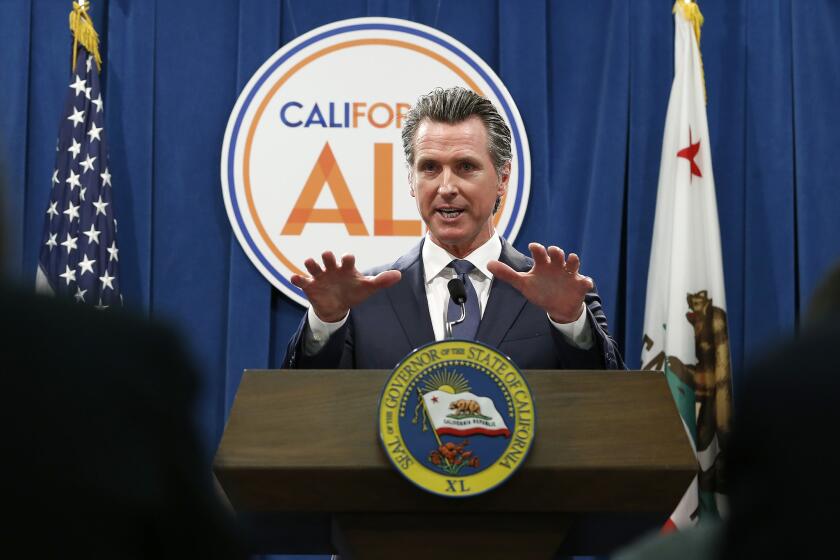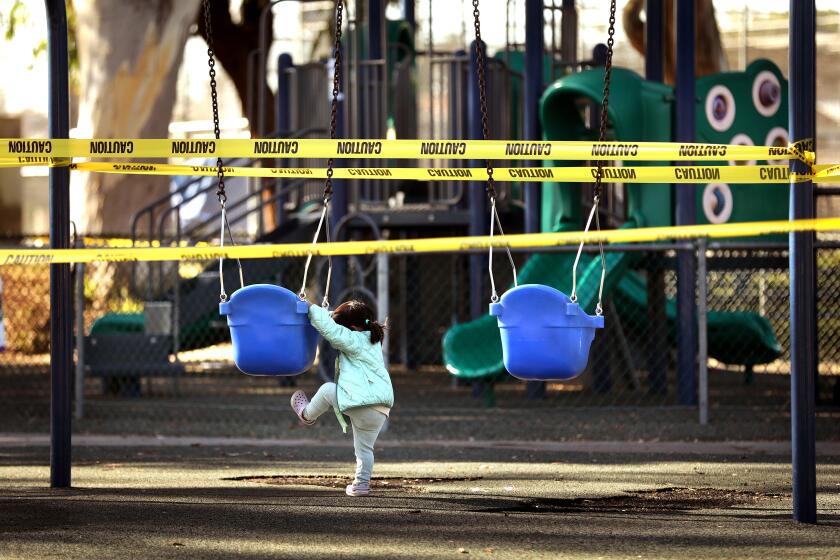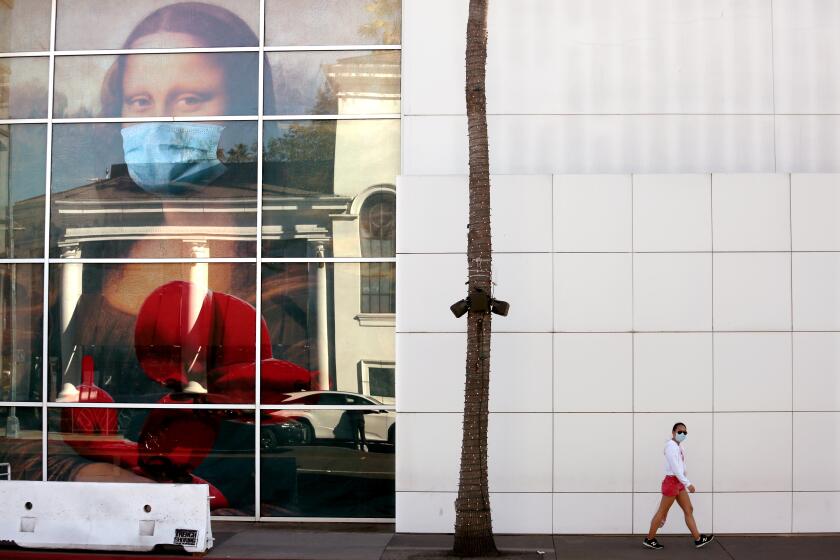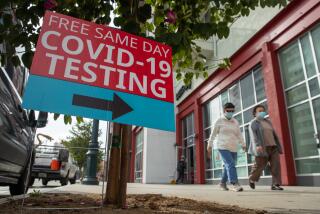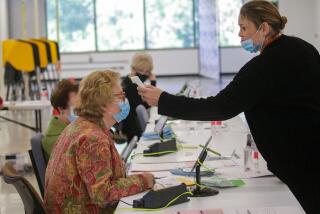L.A. County breaks single-day coronavirus case record as new restrictions loom
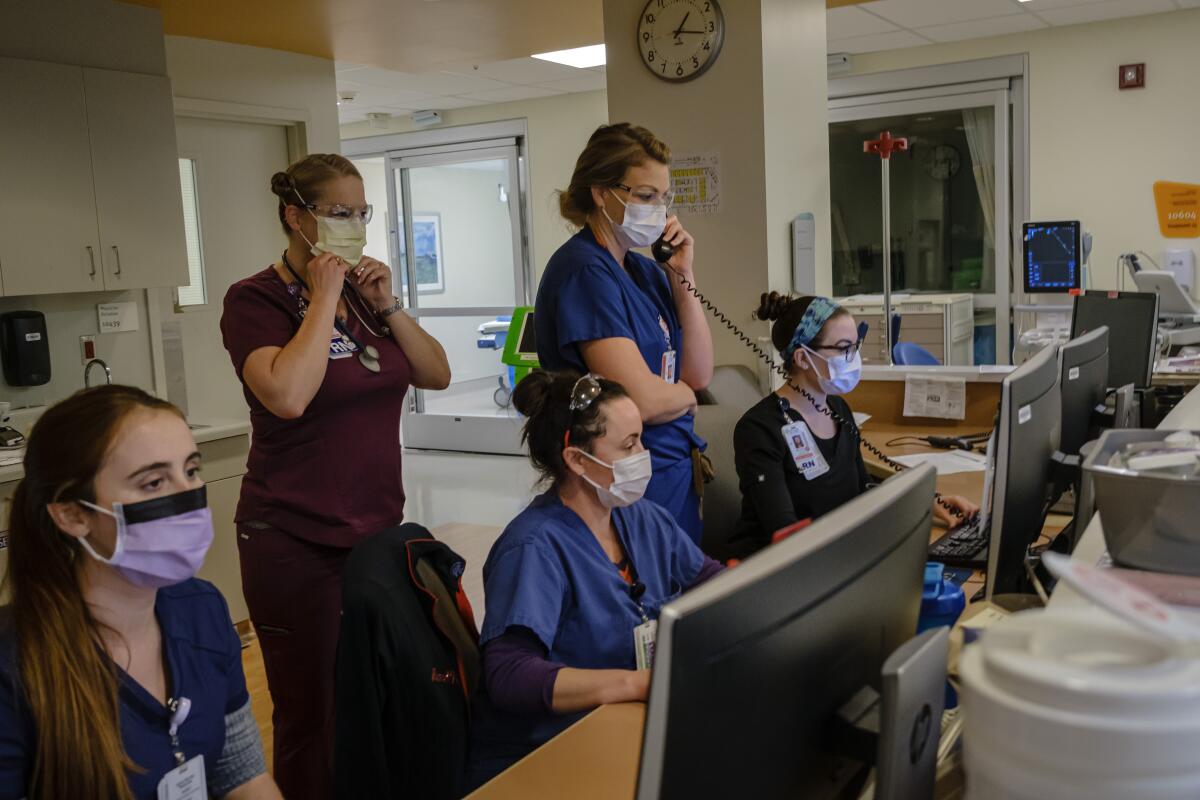
Los Angeles County broke another record for daily coronavirus cases Thursday, the same day state officials unveiled new guidelines that soon could subject the county — along with the rest of Southern California — to additional limits on businesses and activities in a bid to beat back the pandemic’s strongest surge.
Officials reported 7,713 new coronavirus cases in L.A. County, according to a Times tally, the second time in three days the daily total has surpassed 7,500.
“I can’t emphasize this enough: Everyone must take personal steps to protect themselves from getting and spreading this virus to others,” L.A. County Health Officer Dr. Muntu Davis said during a briefing. “Actions need to be taken now and on a daily basis.”
Along with the staggering case count — which boosted the county’s infection total above 420,000 — hospitalizations also continue to hit new highs.
There are 2,668 patients with a confirmed case in hospitals countywide, according to the latest tally. That number has more than doubled from two weeks ago.
And since Nov. 15, the number of COVID-19 patients in L.A. County’s intensive care units has doubled, from 308 to 632.
The U.S. logged more than 3,100 COVID-19 deaths and 100,000 hospitalizations on Wednesday, setting records for both as infections continue to soar.
County officials have said the latter number is particularly alarming.
Though hospitals can increase capacity should the need arise, they cannot perpetually do so. ICUs present a particular challenge, as they typically need specialized space, staff and equipment.
“If steps to curb transmission are abandoned, then the number of people requiring hospitalization can still overwhelm any additional capacity that hospitals are able to create,” Dr. Christina Ghaly, the county’s director of health services, said Wednesday.
Additional closures of California businesses and activities will be based on projections of regional intensive care unit capacity.
For many parents confounded by an array of official dictates, closing playgrounds crossed a line in the sandbox.
State officials are considering the kind of stay-at-home order that helped curb the virus’ spread in the spring. What is unclear is whether Californians will stomach even a modified lockdown as they did in March and April.
How much public appetite there is for more stringent restrictions remains to be seen.
Policymakers and public health officials have long warned of the consequences of pandemic fatigue and emphasized that the only path forward is through collective vigilance and a doubling down on infection prevention protocols — including wearing masks in public, regularly washing your hands and staying home when you’re sick, as well as keeping distance from, and avoiding gatherings with, those outside your household.
“We’re not asking you to live in fear; we’re asking you to take the precautions needed to prevent the continued spread of this virus,” Davis said. “If more of us take these steps, we stand a very good chance of seeing transmission rates decline.”
Social media lighted up Wednesday night when the city of Los Angeles unrolled it own “targeted” stay-at-home order following a rise in coronavirus cases.
Critics on social media complained the latest rules appeared to be contradictory and questioned the seemingly sudden announcement by the city.
In fact, Los Angeles County had released the same order days earlier. But the technical language of the county’s order failed to generate the same attention, in part because the county didn’t send out a text message about the order, as the city did.
Both the city and the county directives order people to stay home, while also exempting a slew of activities, including tennis, beach-going, and more, with some restrictions.
Asked about the criticism, Los Angeles County health officials said Thursday that they were trying to achieve a balance with the rules.
“We recognize that getting out and having physical activity is good for your health and your mental wellbeing,” said Davis.
He said those activities can happen with family members, but that “intermingling and mixing with other households” is to be avoided. He also said people have to be able to go to their jobs.
“We’re asking that people stay at home and really only do what’s essential, and the basic necessities that you need to, to avoid potentially coming in contact with others who may unknowingly be infected and expose you or your family to the disease,” Davis said.
Times staff writers Rong-Gong Lin II and John Myers contributed to this report.
More to Read
Sign up for Essential California
The most important California stories and recommendations in your inbox every morning.
You may occasionally receive promotional content from the Los Angeles Times.

